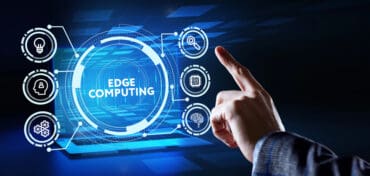
Edge computing applications, like information technology itself, are only limited by one’s imagination.
There is no one single way to describe edge computing – it comes in many flavors, and takes many different shapes and forms across the industries in which it’s deployed. It may be applications embedded into a machine, it may be handheld devices used in the field, and it may be sensors located within buildings.
We could attempt to list the many variations of edge computing within this site, but that would be a long read. Instead, we turn to a description of key edge computing configurations compiled by Gartner analyst Tom Bittman, who outlines the essential roles emerging for edge computing. As you read what he says, it’s important to remember that edge computing – like information technology itself – is only limited by one’s imagination. But Bittman at least gives us a start on where edge is making a difference:
See also: Moving Targets: Defining the Edge and Its Architecture
System automation. “Edge computing can reduce the need for analysis and decision making to take place remotely and centrally — avoiding bandwidth and delay,” Bittman states. “It can also help automate work that today is manual — reducing on-site staff in remote locations. Edge computing can assist where response time requirements can be measured in milliseconds or even microseconds — especially where health and safety are critical — in the hospital or the power utility.”
Immersive interactions. “Most interactions that need to operate at human speed or faster can’t tolerate latency or disconnection issues,” Bittman says. “Edge computing will enhance immersive interactions in homes, workplaces, and stores. Examples include intelligent assistant providing information on demand, mixed reality (MR) interactions – with digital-only information and controls, management consoles, training scenarios, design work.”
Immersive control. “There are a growing number of digital interfaces for people to control things in natural, immersive ways,” he says. “Examples include hands-free robotic surgery, conversational interfaces, and voice commands. Often this control requires a working internet connection, but edge computing can increase autonomy when it makes sense. For example, voice-controlled digital assistants like Alexa and Google Assistant still require an internet connection — something likely to improve as intelligent speakers take on more edge computing capabilities.”
Immersive reporting. “This is a form of AR where the thing is supplying information about itself. Use cases include AR for device status and maintenance, AR for in-store shopping, a head-up display in a car showing detailed information about stores and restaurants nearby, or a vibrating phone when approaching a dangerous object, or crossing a crosswalk unsafely.”
Distributed business processing. “Interactions between businesses or business units might never involve people or things. They could involve entirely digital transactions and yet might be sensitive to locations and latency. Examples include compliance monitoring, pushing business rules closer to transactions, ATMs, and financial transaction analysis to reduce latency when time equals money. If they solve latency, bandwidth, semi-autonomy, or privacy issues, these would be considered examples – or good candidates – for edge computing.”
Business automation. “Business controls can be pushed to the edge as business requirements change, improving latency, reducing bandwidth, and enabling autonomy during a temporary disconnection. Business controls can also be delegated to the edge when it makes sense – or centralized when conditions warrant – for example, synchronizing based on global transactions.”
Again, these are just a few of the ways edge computing can serve to increase user and customer experiences while providing new capabilities to the business. Many more will be emerging in the months and years to come as technology, and business leaders and professionals learn to balance processing requirements across the scope of their enterprises.







